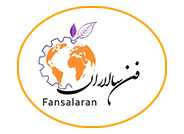Some poorer nations hit by cuts in HIV/AIDS funding from rich donors have boosted their own spending in response, but not enough to make up for huge staff losses and drops in preventative drug use, UNAIDS said on Thursday.
In its annual report for 2025, launched in South Africa, the agency also reiterated that if the Trump administration’s cuts to the U.S. HIV programme remain permanent, there could be 6 million extra infections and 4 million more deaths by 2029.
Trump’s sudden slashing of finance for the President’s Emergency Plan for AIDS Relief (PEPFAR) threw the global response to HIV/AIDS into disarray.
Although many countries still have enough life-saving antiretroviral drugs, clinics aimed at vulnerable groups such as gay men, sex workers and teenage girls have shut due to a lack of paid staff, and prevention programmes have all but petered out.
“Prevention was hit harder than treatment. Key populations were the worst affected … they depended on tailored services by community leaders, and those were the first to go,” UNAIDS Executive Director Winnie Byanyima told Reuters in an interview in Johannesburg.
Byanyima said that even before the Trump cuts, donors were scaling back development assistance, notably European countries.
“They’ve told us that it has to do with defense spending,” she said, adding that figures showed “global health (spending) peaked and then it also started declining with the Ukraine war.”
Meanwhile, UNAIDS itself is reducing staff numbers to 294, from 661 previously, a spokesperson told Reuters by email.
The UNAIDS report said 25 out of 60 low and middle-income countries had boosted HIV spending in their domestic budgets between them by about 8%.
“This is promising, but not sufficient to replace the scale of international funding in countries that are heavily reliant,” it said.
By the end of 2024, infections had been brought down by 40% and AIDS-related deaths by more than half from 2010 levels, the report said, but there were still 1.3 million new infections in that year alone.






